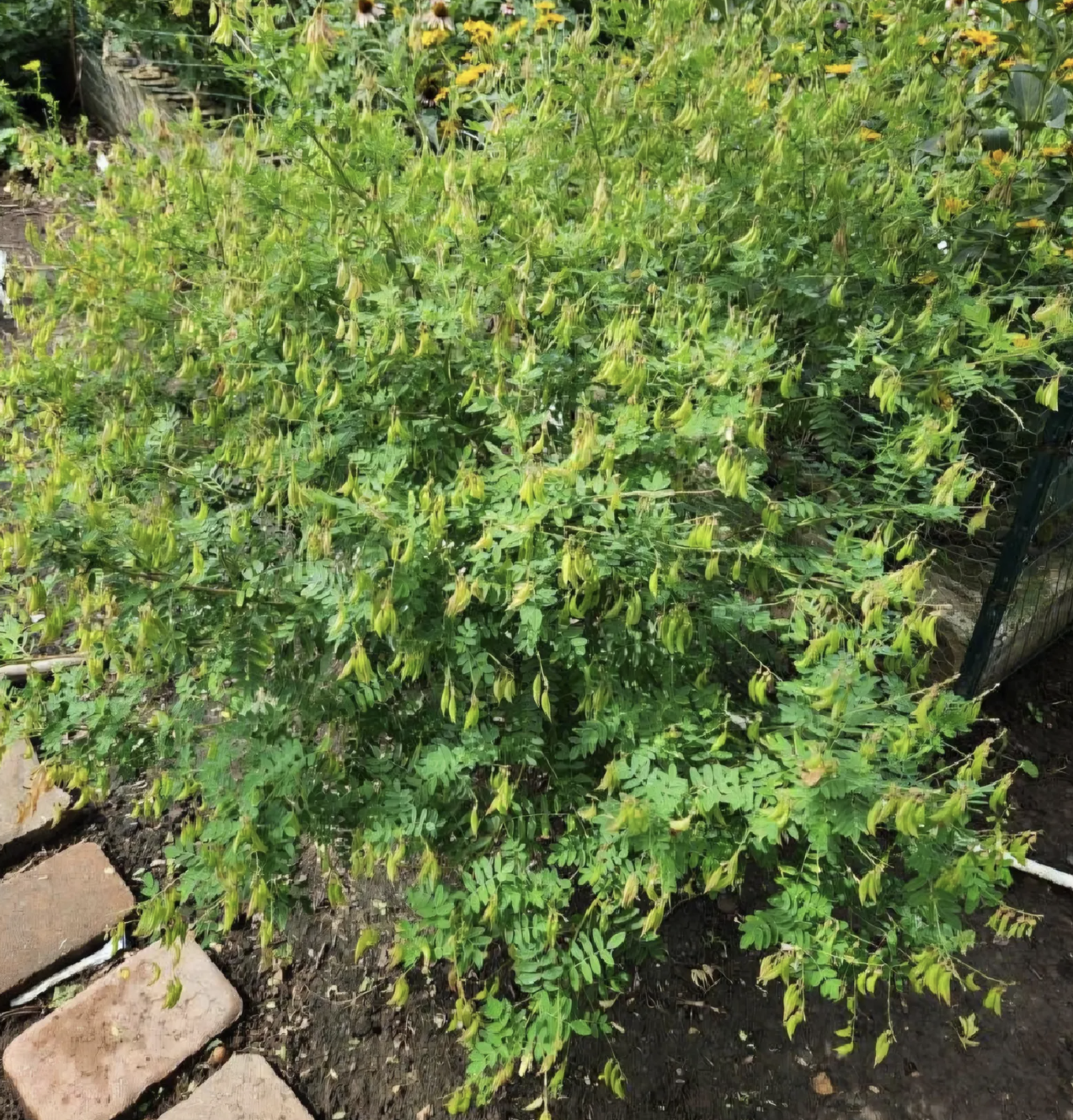 Image 1 of 1
Image 1 of 1


Astralagus
Astragalus membranaceus
Description: Astragalus is a time-honored perennial herb valued in traditional Chinese medicine for its immune-boosting and adaptogenic properties. This leguminous plant features soft, ferny leaves and delicate yellow blooms in mid to late summer. Its true magic lies underground—in the thick, woody taproot that stores years of energy and wellness-supporting compounds. With a slow and steady growth habit, Astragalus is a beautiful and resilient addition to any wellness-focused or permaculture-style garden.
Wildlife Benefits: As a member of the pea family, Astragalus helps improve soil health through nitrogen fixation. While it’s not a top draw for pollinators, its blooms still offer gentle support to native bees and beneficial insects. Its upright structure can also offer light shelter for ground-dwelling creatures.
Medicinal Benefits: The roots of Astragalus are traditionally used in teas, broths, and tinctures to support immune health, improve resilience to stress, and promote long-term vitality. It’s considered one of the top tonic herbs in traditional herbalism. Roots should be harvested in the second or third year for best potency.
Native Status: Native to northern China and Mongolia, Astragalus is well-adapted to many U.S. growing zones and performs well in Georgia’s climate with proper drainage and sun exposure.
Pollinator Friendliness: Though modest in bloom, Astragalus contributes to pollinator ecosystems through habitat creation and soil support—making it a valuable companion in an herbaceous polyculture or wildlife-friendly landscape.
Planting Guidelines:
Height: 2–4 feet
Spacing: 12–18 inches
Sun/Shade: Requires Full Sun
How to Grow: Sow seeds in early spring after cold stratification, or transplant after last frost. Plant in well-drained, sandy or average soil and avoid overwatering. Water lightly until established, then allow soil to dry between waterings. Best root harvest occurs after 2–3 years of growth. Astragalus is drought-tolerant and benefits from being left undisturbed once established.
Grow Astragalus for its deep medicinal roots, soil-enhancing abilities, and grounding presence in your herb garden—a humble healer with long-lasting benefits.
Available in 2.5 inch and 4.25 inch (quart) pots
Astragalus membranaceus
Description: Astragalus is a time-honored perennial herb valued in traditional Chinese medicine for its immune-boosting and adaptogenic properties. This leguminous plant features soft, ferny leaves and delicate yellow blooms in mid to late summer. Its true magic lies underground—in the thick, woody taproot that stores years of energy and wellness-supporting compounds. With a slow and steady growth habit, Astragalus is a beautiful and resilient addition to any wellness-focused or permaculture-style garden.
Wildlife Benefits: As a member of the pea family, Astragalus helps improve soil health through nitrogen fixation. While it’s not a top draw for pollinators, its blooms still offer gentle support to native bees and beneficial insects. Its upright structure can also offer light shelter for ground-dwelling creatures.
Medicinal Benefits: The roots of Astragalus are traditionally used in teas, broths, and tinctures to support immune health, improve resilience to stress, and promote long-term vitality. It’s considered one of the top tonic herbs in traditional herbalism. Roots should be harvested in the second or third year for best potency.
Native Status: Native to northern China and Mongolia, Astragalus is well-adapted to many U.S. growing zones and performs well in Georgia’s climate with proper drainage and sun exposure.
Pollinator Friendliness: Though modest in bloom, Astragalus contributes to pollinator ecosystems through habitat creation and soil support—making it a valuable companion in an herbaceous polyculture or wildlife-friendly landscape.
Planting Guidelines:
Height: 2–4 feet
Spacing: 12–18 inches
Sun/Shade: Requires Full Sun
How to Grow: Sow seeds in early spring after cold stratification, or transplant after last frost. Plant in well-drained, sandy or average soil and avoid overwatering. Water lightly until established, then allow soil to dry between waterings. Best root harvest occurs after 2–3 years of growth. Astragalus is drought-tolerant and benefits from being left undisturbed once established.
Grow Astragalus for its deep medicinal roots, soil-enhancing abilities, and grounding presence in your herb garden—a humble healer with long-lasting benefits.
Available in 2.5 inch and 4.25 inch (quart) pots
